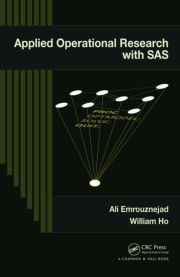Data envelopment analysis (DEA) is a methodology for measuring the relative efficiencies of a set of decision making units (DMUs) that use multiple inputs to produce multiple outputs. Crisp input and output data are fundamentally indispensable in conventional DEA. However, the observed values of the input and output data in real-world problems are sometimes imprecise or vague. Many researchers have proposed various fuzzy methods for dealing with the imprecise and ambiguous data in DEA. In this study, we provide a taxonomy and review of the fuzzy DEA methods. We present a classification scheme with four primary categories, namely, the tolerance approach, the a-level based approach, the fuzzy ranking approach and the possibility approach. We discuss each classification scheme and group the fuzzy DEA papers published in the literature over the past 20 years.
For a good source of fuzyy DEA see:
(Source 1) |
(DOI) |
Hatami-Marbini, A., A. Emrouznejad, et al. (2011). “A Taxonomy and Review of the Fuzzy Data Envelopment Analysis Literature: Two Decades in the Making.” European Journal of Operational Research 214(3): 457-472 . | (Source 2) |














